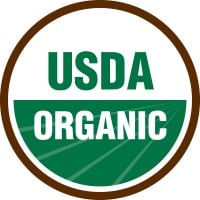
More and more, I’m recommending that my customers use an oil blend when they can — when their customers will appreciate it rather than feeling like it detracts from their product.
Why do I like these blends so much? I think an oil blend has a number of advantages that they bring to the table. But it all depends on what you’re looking for.
To be clear, a blend is a mix of two different types of oils. Both of them would have to be listed on your ingredient label, so you'd have two different oils in your product instead of one.
If you’ve been considering this option, today I’d like to help you see the oil blend option in a new light.
List Multiple Oils On Your Ingredient List
 Instead of just one oil — like Non-GMO Expeller Pressed Canola Oil — you’ll now list two oils: Non-GMO Canola and Extra Virgin Olive Oil. This allows you to include some of the healthier oils that have a positive consumer perception like Extra Virgin Olive Oil that you might not have been able to otherwise include. If it adds to your product and consumers see it as a high quality oil, it only brings the perception of your products up.
Instead of just one oil — like Non-GMO Expeller Pressed Canola Oil — you’ll now list two oils: Non-GMO Canola and Extra Virgin Olive Oil. This allows you to include some of the healthier oils that have a positive consumer perception like Extra Virgin Olive Oil that you might not have been able to otherwise include. If it adds to your product and consumers see it as a high quality oil, it only brings the perception of your products up.
The key when you’re analyzing is to ask the following question: “If I wasn’t doing a blend, would I be doing 100% of the higher quality oil or 100% of the lower quality oil?”
If the high quality oil was already out of the question because the price point was too high (and therefore you would have had to go with the lower quality oil), going with a blend will allow you to create a compromise that will still bring your ingredient quality and perception up.
My recommendation will be different if you were planning to do a 100% Extra Virgin Olive Oil already. If you can afford it and your consumers love it — nay, they depend on you for it — by all means stick with it! In this case, a blend won’t be ideal for you.
Blends Still Can Meet Organic or Non-GMO Requirements
Need an oil ingredient that’s Non-GMO Project Verified or USDA Organic Certified?
Don’t fret, you can still find the right blend for you. The most common oils used in the blends that are non-GMO or organic are as follows:
Non-GMO Project Verified

Safflower Oil, High Oleic Expeller Pressed (naturally non-GMO)
Sunflower Oil, High Oleic Expeller Pressed (naturally non-GMO)
Non-GMO Soybean Oil, Expeller Pressed
Non-GMO Canola Oil, Expeller Pressed
Extra Virgin Olive Oil
Pure Olive Oil
USDA NOP Organic Certified
 Organic Sunflower Oil, High Oleic
Organic Sunflower Oil, High Oleic
Organic Canola Oil
Organic Soybean Oil
Organic EVOO
Each of these oils above can be blended in different custom ratios to make up your final product. Make your own!
Take Advantage of Marketing Opportunities
Blends allow you to market the high quality oils that you want to use in your product, without having to use only that oil (and incur the higher cost of only that oil).
For example, I know brands that use oil blends — Sunflower Oil and Extra Virgin Olive Oil, for example. On the front of the product, they state “Made With Extra Virgin Olive Oil”. However, on the ingredient listing, they list both oils in the order that the ratio specifies.
That said, be careful with the marketing wording line here. Always try to bring your products best features to light, but being honest and truthful is key. For example: “Made with an olive oil blend” could be a good selling point.
Save On Costs
Oil blends can be used as a means to an end: they will allow you to use some of the high quality, expensive oil that you are looking for, while still bringing you cost savings by allowing most of the final oil blend to be at a lower cost.
For example, compare the costs of 100% Extra Virgin Olive Oil, 100% Canola Oil and a 90/10 Blend of Canola Oil and Extra Virgin Olive Oil (respectively). With a 90/10 blend like this, your final oil pricing will land above canola oil, but not drastically above — not at the median of those two prices, because there’s much more canola oil in the blend than EVOO.
Therefore, blends can be custom-created using different types of oils and different oils to help you find the cost savings that’s just right for you while still keeping your customers happy.
Meet Your Exact Price Goals
 On that same line of thinking, Centra Foods can actually allow you to create any custom blend you could think of.
On that same line of thinking, Centra Foods can actually allow you to create any custom blend you could think of.
That means that if you have a budget for your ingredients (and I know you do!) you can adjust the ratios of how much of this oil and how much of that oil to affect the pricing and meet your exact target price goals.
Talk about a good fit!
Topics: Extra Virgin Olive Oil, Comparing Oils












